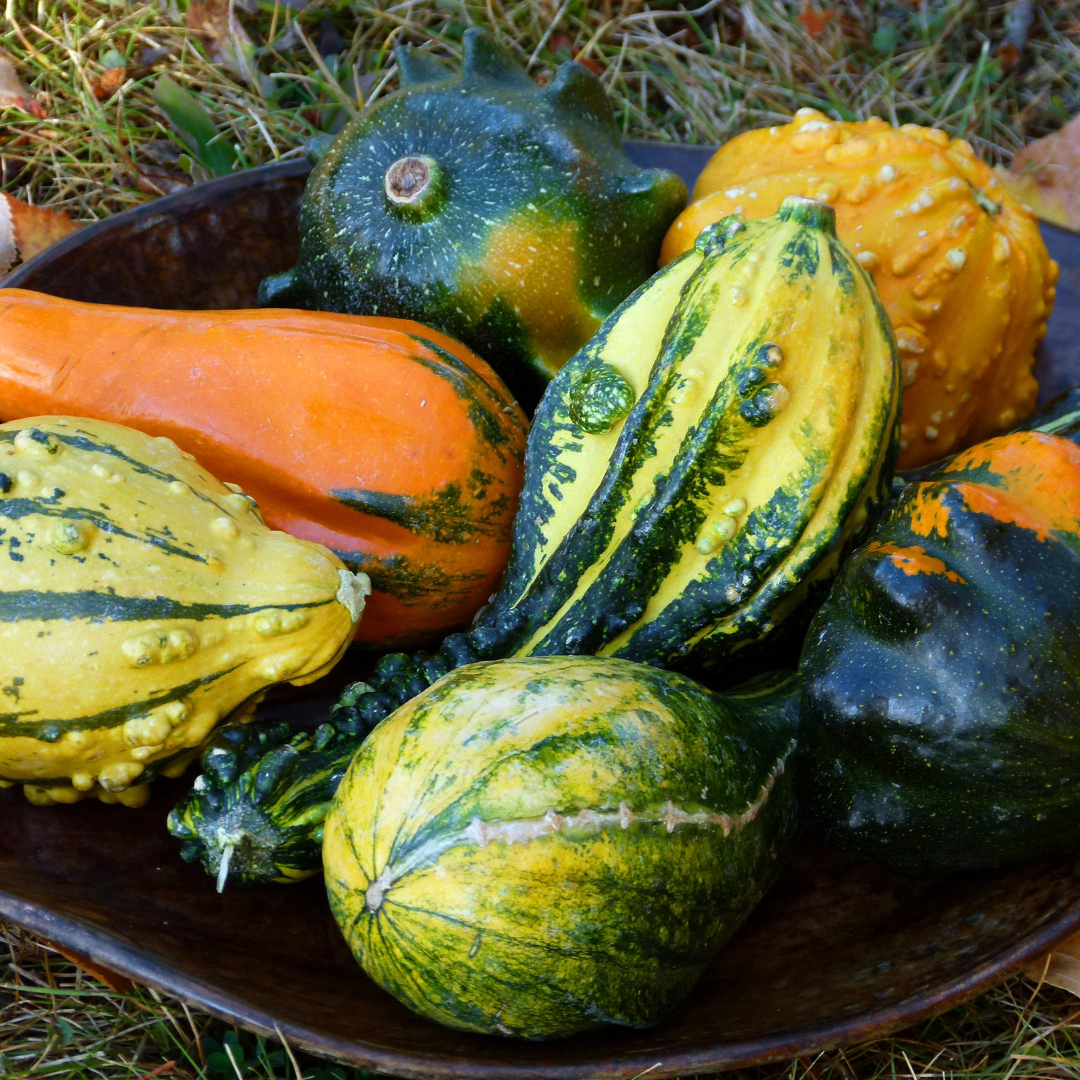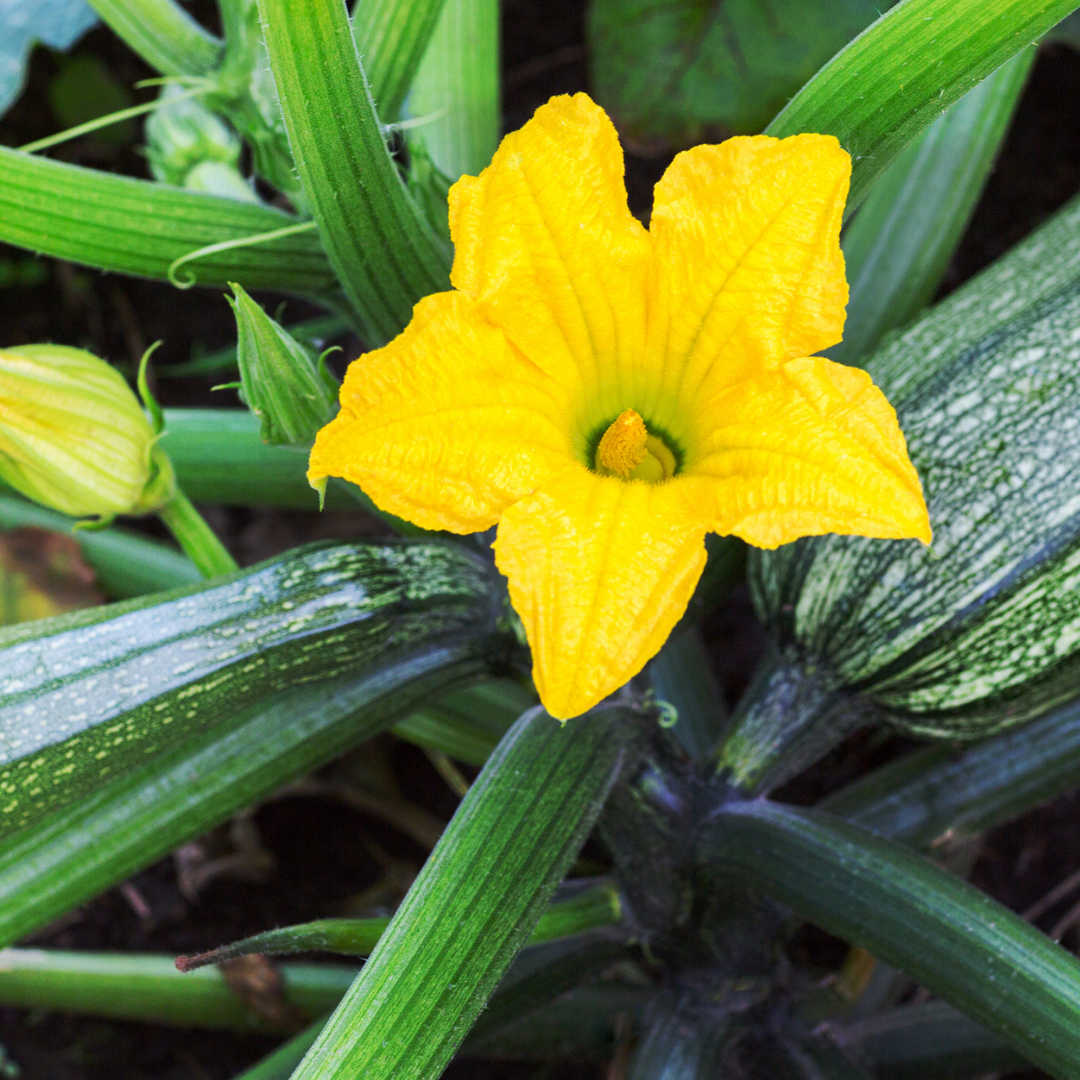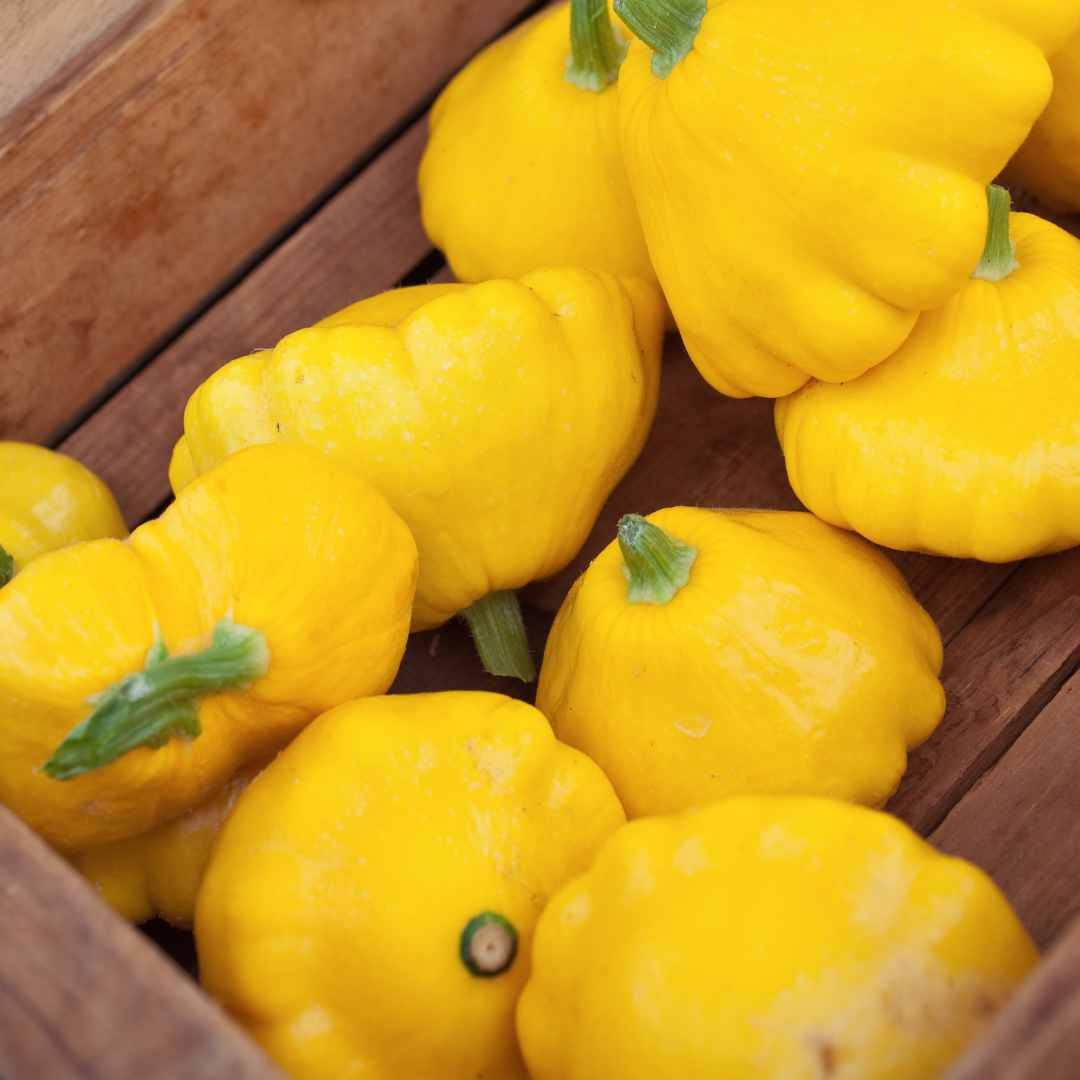If you're looking to grow squash in Texas, you're in luck! The warm and sunny climate in the state is perfect for growing this versatile vegetable. Squash can be grown throughout the state, but certain areas like Central Texas are particularly suited to grow summer and winter squash varieties. In this article, we'll discuss everything you need to know to know how to grow squash in Texas, including recommended varieties, common pests and diseases, and tips for pollination and harvesting.
Choosing the Right Type of Squash Seed
Before you start growing squash, you'll need to decide which type to plant. There are two main categories of squash: summer and winter. Summer squash, such as zucchini and yellow squash, have thin skin and are harvested when they're still immature. Winter squash, like butternut and acorn squash, has a thicker skin and is harvested when they're fully matured.
Non-GMO Squash Seeds | 8 Variety Pack
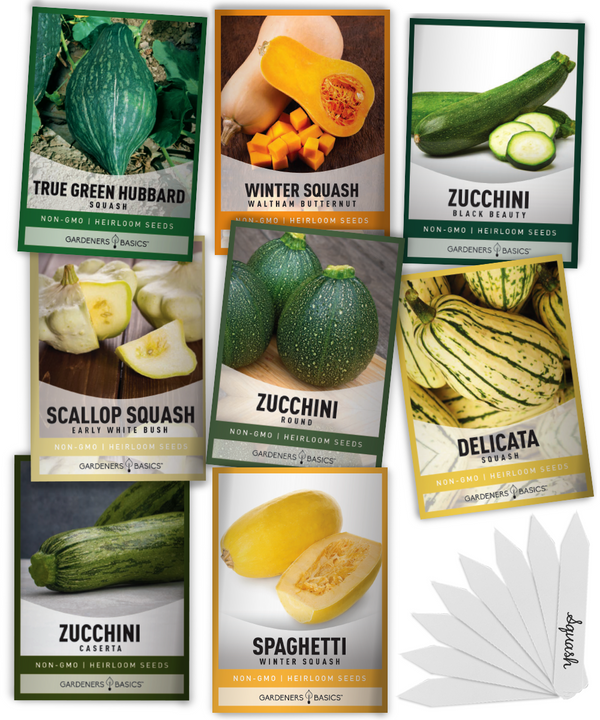
$15.95
Ultimate 8 Squash Seeds Variety Pack for Home Gardeners – Heirloom & Non-GMO Seeds Introducing our 8 Squash Seeds Variety Pack—the ultimate selection for gardeners who love cultivating a diverse range of delicious, homegrown squash! This carefully curated variety pack… read more
When it comes to growing squash in Texas, summer squash is the more popular choice. Recommended varieties for Texas include Black Beauty zucchini, yellow crookneck squash, and pattypan squash. These varieties are known to do well in Texas' warm climate and can produce a bountiful harvest.
Preparing the Soil
Once you've chosen your squash seeds, it's time to prepare the soil. Squash plants prefer well-draining soil that's rich in organic matter. You'll want to add compost or well-rotted manure to the soil before planting to retain moisture and provide nutrients to the plants.
Squash seeds should be planted about an inch deep and spaced about two to three feet apart. If you're planting multiple rows, leave about four to five feet between the rows. After planting, it's important to keep the soil moist, but not waterlogged.
Fertilizing and Side Dressing
To ensure your squash plants get the nutrients they need, it's recommended to side-dress them with fertilizer once they start to grow. Side dressing means adding fertilizer to the soil around the base of the plants. A balanced fertilizer, like 10-10-10, is a good choice for squash plants. Apply the fertilizer according to the manufacturer's instructions, being careful not to over-fertilize as this can lead to poor fruit production.
Dealing with Pests and Diseases
Squash bugs and squash vine borers are common pests that can wreak havoc on squash plants. Squash bugs feed on the leaves and stems of the plants, while squash vine borers tunnel into the stems, causing the plant to wilt and die.
To prevent squash bugs and vine borers from damaging your plants, it's important to practice good garden hygiene. Remove any plant debris from the area around your squash plants, as this can attract pests. You can also cover your plants with row covers to prevent pests from getting to them.
Powdery mildew is a common disease that can affect squash plants. It's a fungal disease that causes a white, powdery coating to form on the leaves of the plant. To prevent powdery mildew, avoid overhead watering and water at the base of the plant instead. You can also apply a fungicide if the disease is already present on your plants.
Heirloom Squash Seeds | 5 Variety Pack
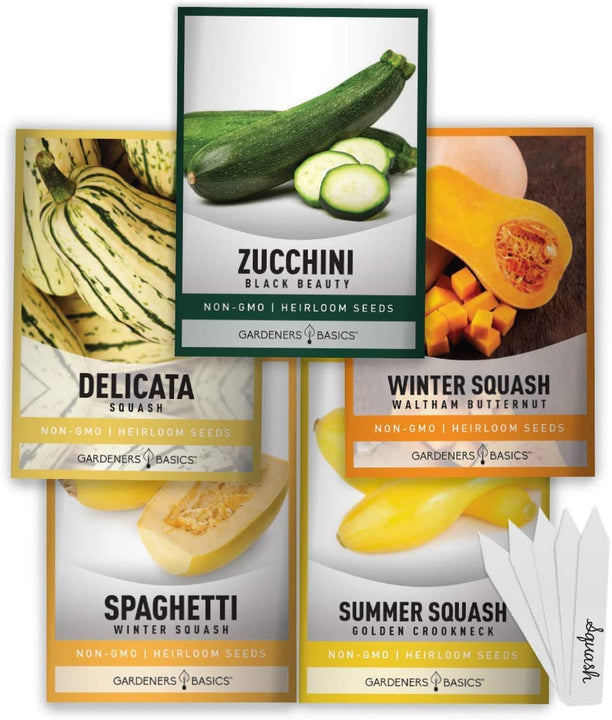
$9.95
5 Squash Seeds Variety Pack: Heirloom, Non-GMO, Open-Pollinated Squash Seeds for Vegetable Gardening Our 5 Squash Seeds Variety Pack is the ultimate collection for garden enthusiasts and squash lovers! Whether you're' a seasoned gardener or just starting out, this heirloom… read more
Hand Pollination
Squash plants have male and female flowers, and pollination is necessary for fruit production. Male flowers have long stems and do not produce fruit, while female flowers have a small fruit attached to the base of the flower.
In some cases, squash plants may not be pollinated properly, leading to poor fruit production. To ensure your plants are properly pollinated, you can hand-pollinate them. Use a cotton swab or small brush to transfer pollen from the male flowers to the female flowers. You can also shake the plants gently to help distribute the pollen.
Harvesting Squash
When it comes to harvesting squash, it's important to do so at the right time. Summer squash should be harvested when it's still immature, usually when the fruit is about six to eight inches long. Winter squash, on the other hand, should be harvested when it's fully matured, usually when the skin has hardened and turned a deep color.
To harvest squash, use a sharp knife or scissors to cut the fruit from the stem. Be sure to leave a small amount of stem attached to the fruit, as this will help it last longer in storage.
In Conclusion
Growing squash in Texas can be a rewarding experience. By choosing the right variety, preparing the soil, and practicing good garden hygiene, you can ensure a successful harvest. Remember to watch out for pests and diseases, and be sure to hand pollinate your plants if necessary. With a little bit of care and attention, you'll be able to enjoy fresh, homegrown squash all summer long!
FURTHER READING ----->>>> How to Grow Zucchini from Seed
Waltham Butternut Winter Squash Seeds
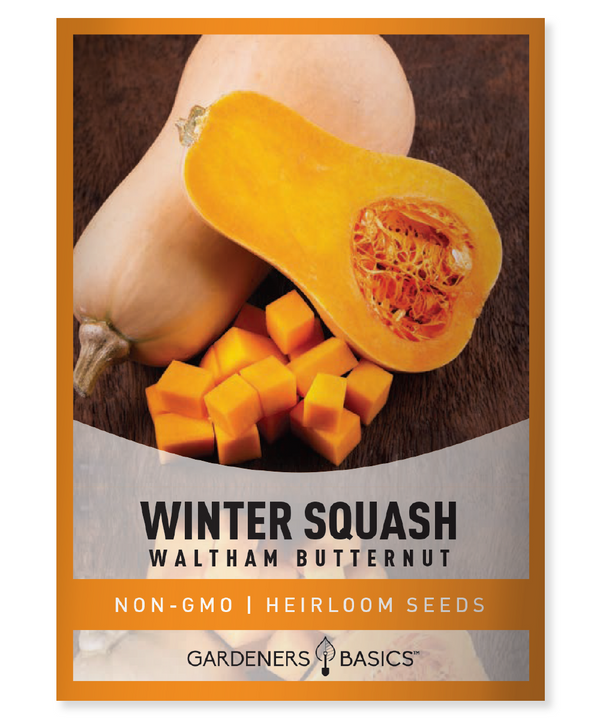
$2.49
Waltham Butternut Squash Seeds – Heirloom, Non-GMO, Non-Hybrid, Open-Pollinated Grow your own delicious and versatile Waltham Butternut Winter Squash with these premium heirloom seeds! Known for their smooth, nutty flavor and creamy texture, these squashes are perfect for roasting, soups,… read more



